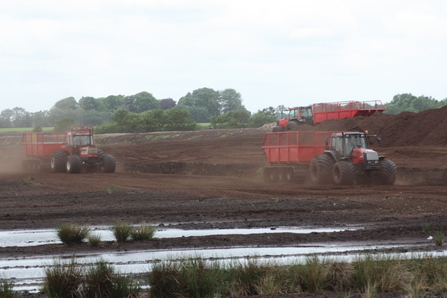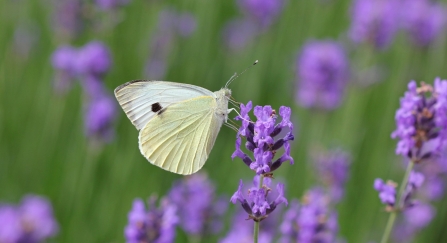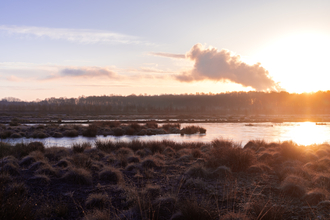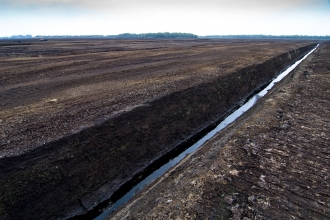Unfortunately, across our planet many of our precious peatlands are still being drained and dug up to fill the bags of compost, and grow the plants, that you buy in your local garden centre.
How to go wild and peat-free in your garden
Wildlife gardening by Tom Marshall

Peat extraction on Little Woolden Moss in 2011
Peatlands are our largest store of soil carbon, holding about 33 per cent of all terrestrial carbon, whilst only covering around three to five per cent of the earth’s surface. In fact, peatlands are able to store twice as much carbon as forests!
Yet as soon as they are drained, damaged or degraded in any way, all of this carbon is released into the atmosphere, becoming a major contributor to greenhouse gas emissions.
But you can make a difference, simply by going peat-free in your garden at home.
More and more retailers are starting to stock peat-free composts, and if you ever can’t find any please go and ask for it, and please don’t just give up and buy whatever is to hand. By making the demand for peat-free products clear to retailers, they will stock more of it.

Large white butterflies are fond of lavender. Image by Megan Lowe
And don’t forget about plants, too. Unless they are specifically labelled as peat-free then they will have been grown in a peat-based compost. So regardless of whether it is gorgeous pollinator-friendly lavender, honeysuckle or anything else - it will have contributed to habitat destruction and climate change.
It is also important to think about lawn turf. In areas of Greater Manchester, many of the once boggy peatlands have been drained and used for turf production - with just a 10m x 10m area releasing as much carbon as would be generated by a seat on a return flight from Manchester to New York!
How easy is it to garden peat-free?
There are a couple of points that are worth bearing in mind when going peat-free in your garden, but one important thing to remember is that peat wasn’t widely used in composts before the late 1950s – and people still managed to grow wonderful gardens full of vegetables and flowers.
Some people may worry that peat-free compost dries out more quickly, so there are a couple of tips that can help if you are using peat-free compost, especially in containers and hanging baskets:
- Water little and often – although this is true of all containers as it will ensure that you aren’t wasting water.
- Consider adding water retaining crystals to your compost.
- Mix in a little garden soil which will help to retain water.
- Add a drop of washing-up liquid to your watering can to help the water bind to the compost more easily.
- When sowing seeds, sprinkle them over peat-free compost and then cover with a layer of horticultural sand or perlite. This will ensure good contact with the compost and stop a crust forming over the top if it should dry out a little.
- Ensure that your hanging baskets are well lined to avoid further moisture loss.
So come on everyone... give peat a chance!

Garden tiger moth by Denis Jackson
Get more wildlife gardening tips
It doesn't matter whether you have a tiny balcony or a lush garden - every outdoor space can be transformed into a refuge for wildlife and for you!
Download our free My Wild Garden booklet for more wildlife-friendly gardening tips for every space.




